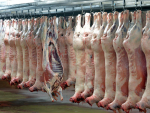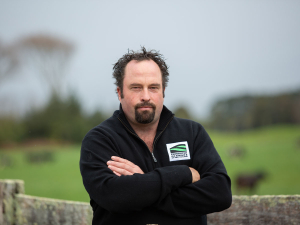“They are becoming resistant to every drug we have on the market,” says West Virginia University assistant professor of food animal production Scott Bowdridge.
“It’s a huge, huge problem.”
Haemonchus contortus, also known as red stomach worm, wire worm or barber’s pole worm, is responsible for anaemia, bottle jaw, and the deaths of infected sheep.
Bowdridge believes he has the answer to widespread anthelmintic resistant strains: St Croix hair sheep. He’s landed a US$150,000 (NZ$189,150) US Department of Agriculture National Institute of Food and Agriculture grant to research the idea.
“The St Croix can clear it themselves in five weeks after the infection. They throw everything they have at it.”
The St Croix, also known as the Virgin Island White, is believed to have descended from the hair sheep of west Africa. Some think it is a cross of the Wiltshire Horn and the native Criollo.
In 1975, 25 Virgin Island White sheep – 22 ewes and three rams – were selected in St Croix and imported into the US.
US St Croix ewes today average 54kg and rams 74kg. Lambing rate varies from 150% to 200% with two lambings a year not uncommon.
Bowdridge says they’re a tropical breed developed under constant exposure to parasites, resulting in a super-charged immune response.
The problem is they have little to no commercial value in the US at present, so he’s looking at cross-breeding with commercial breeds to see if the immune response is heritable, and to discover what it is in their genes that makes the immune system so robust.
“The St Croix sheep launch an immediate, very aggressive attack on any parasite that enters their system, and you don’t see that response in commercial breeds.”
Bowdridge is also looking for the chemical and protein signals that trigger the St Croix’s response, with a view to using the knowledge to develop a way to “wake up” domestic sheep’s immune response to barber’s pole.
If he’s successful in that, the plan is to work with private industry to develop dietary supplements that will trigger a similar boost in commercial sheep.
Barber’s pole has adapted to countries with colder winters, with scientists from Britain and Scandinavia reporting serious problems.
Bowbridge says degree of anaemia can be used as an indicator for drenching, treatment being necessary when an animal’s lower eyelid goes from blood-red to very pink or pale.



















